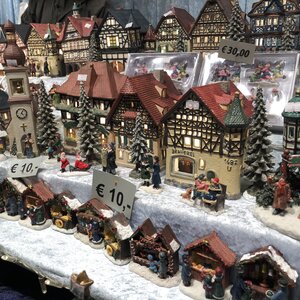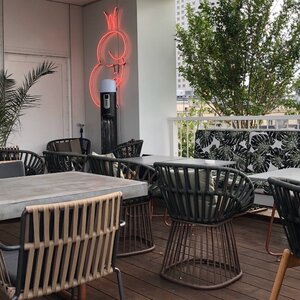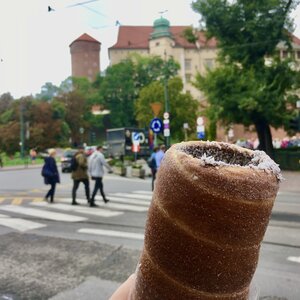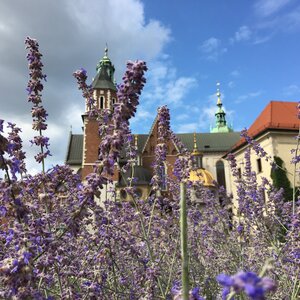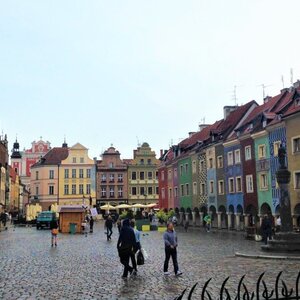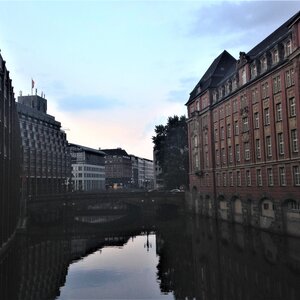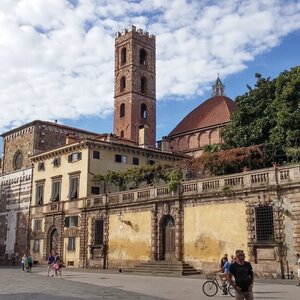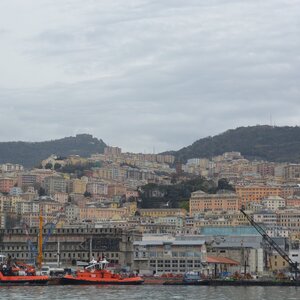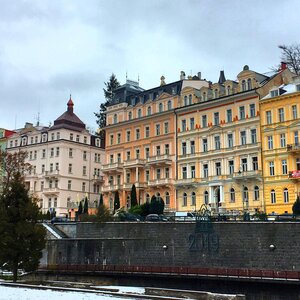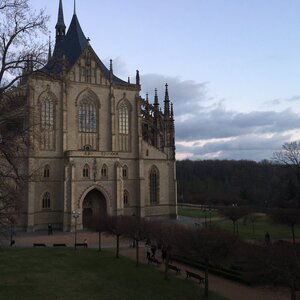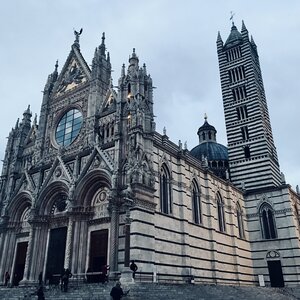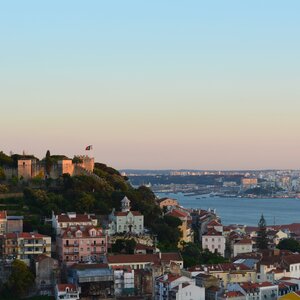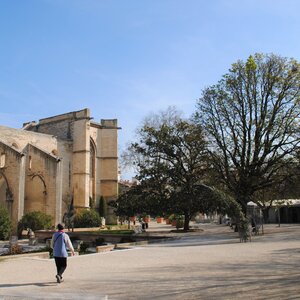Warsaw has been a prominent city on the European continent throughout its history. It was the capital of the Polish-Lithuanian Commonwealth, which occupied the territories of present-day Poland, Lithuania, Ukraine and Belarus, and even a bit of Russia, Estonia, Moldavia, Latvia and Slovakia. Warsaw was the birthplace of Nicolaus Copernicus, Frederic Chopin, Maria Sklodowska-Curie, Roman Polanski and the first non-Italian Pope John Paul II.
In such an old city, every old street holds a story. I’ll tell you what to see in Warsaw if you have only one or two days at your disposal. If you don’t have much time at all, take public transportation.
Palace of Culture and Science (Pałac Kultury i Nauki)
Buses and trains from other countries drop off passengers at the main station. The station is located close to the Palace of Culture and Science, a landmark where I suggest you start exploring the Polish capital.
This palace is a «Stalinist high-rise». In 1952, the head of the USSR gave the project to Warsaw, and it was built in 3 years. The palace with a height of 187.68 meters (237 meters with the spire) is still the tallest building in Poland. It is noticeable to the naked eye if you compare it with modern skyscrapers that stand next to it.
The Palace of Culture and Science is 42 floors of entertainment. It features an exhibition and entertainment complex, a movie theater, a theater, a museum, a restaurant, a store and an observation room on the 30th floor. Concerts or fairs are often held near the center.
- Check the website for what’s running and when, and what events you can catch.
- Hours: 10:00—20:00.
- You can get to the observation deck for 20,00 zł.
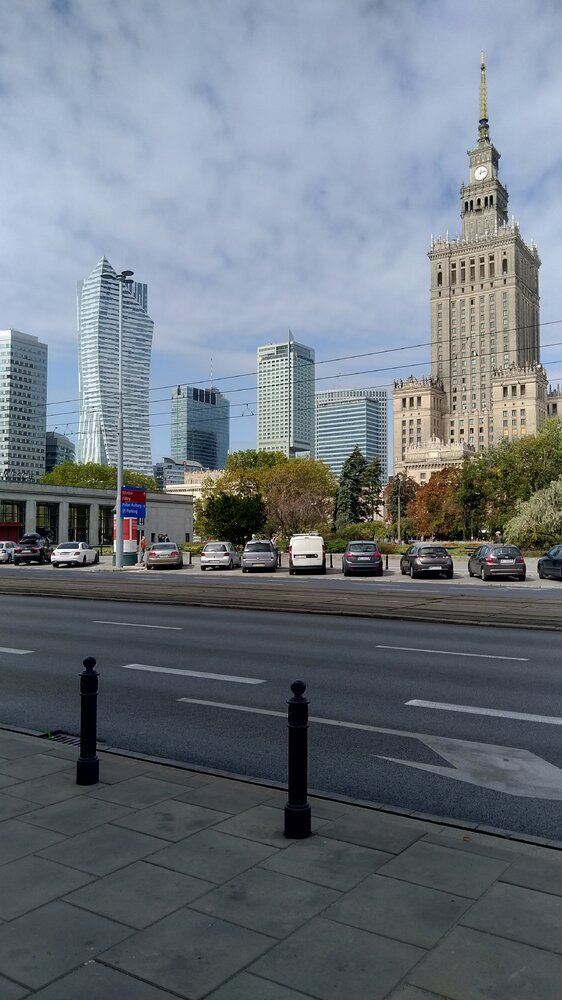
Krakowskie Przedmieście (Krakowskie Przedmieście)
A historic district with a promenade connecting the modern part of Warsaw and the Old Town. Along this street you can walk directly to the historic center, looking at buildings with history, some of which survived the war.
In the past, the neighborhood was part of the Royal Route, a road that ran from Castle Square to the royal Lazienki Park. The most beautiful houses and churches were built along Nowy Świat Street.
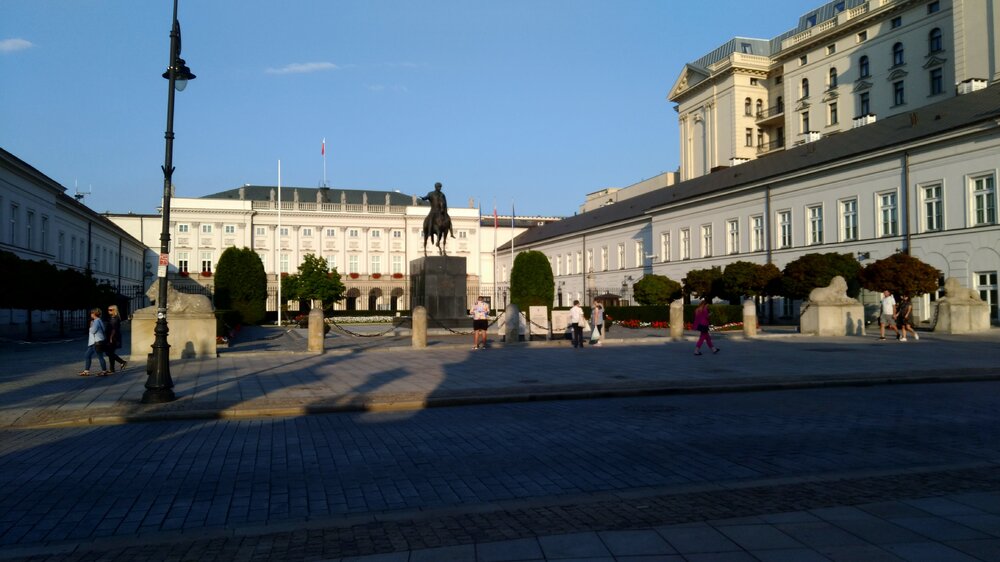
What to see in Krakow’s suburbs:
- St. Anne’s Church. The church was built in 1454. It burned several times and was destroyed during the Warsaw Uprising, but was rebuilt in 1962. On the facade of the church there are sculptures of evangelists, and on the bell tower there is a viewing platform.
- The Church of the Visitation. The basilica was founded in 1651. Frédéric Chopin once played the organ here, after which he set out to conquer Paris. The maestro of romantic music and one of the greatest composers of the XIX century wrote many works that each of us has heard. For example, «Funeral March.»
- The University of Warsaw (UW) began its work in 1816. Since then, 5 Nobel laureates have grown up within these walls.
- Radziwill Palace. The palace served as a residence of kings, later as a theater. During the wartime it was almost unharmed. Now this building is the Presidential Palace, one of the residences of the country’s leader.
- Church of St. Cross. In one of the columns of the church the heart of F. Chopin is bricked up. According to the composer’s will, his heart was to remain forever in his homeland, and his body — where he worked. That is why the heart is in Warsaw and the ashes in Paris on Père Lachaise.
Krakowskie Suburb is the most decorated street in Warsaw. In summer it is decorated with flowers, in winter with illuminations and installations in the form of giant Christmas tree balls and gift boxes. If you sit down on a bench, the music of F. Chopin will play.
There is a 175 bus departing from Kraków Suburb that goes to the airport.
Old Town (Stare Miasto)
Like Vilnius or Riga, Warsaw has a historical center, but here it is rebuilt from the ashes: 85% of Poland's historical heritage was destroyed during wartime. Everything that was formed from the thirteenth to the twentieth century could be lost.
The Old Town of Warsaw was rebuilt in 1980 according to old models. The reconstruction was based on drawings, photos and memories of Warsaw residents.
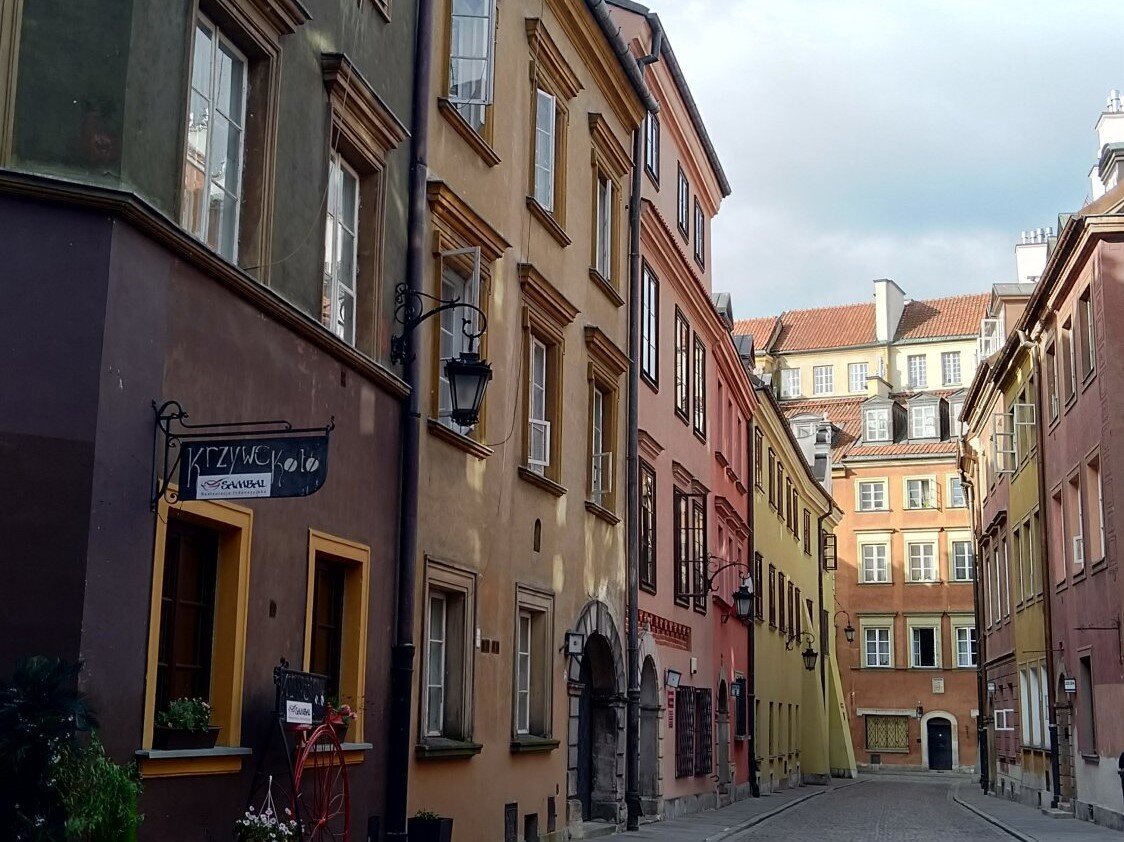
The heart of the Old Town — the Market Square — is the most photogenic place. Around the ancient square are lined with colorful houses, cafes with traditional Polish cuisine, souvenir shops and cafeterias. It is deserted until 8 am, but later there are many people who want to capture the views.
In the center of the Market Square stands a monument to a mermaid. The Town Hall used to stand on this spot, but the building was constantly burning. One day it was decided not to rebuild it, but instead to erect a monument to a Warsaw legend.
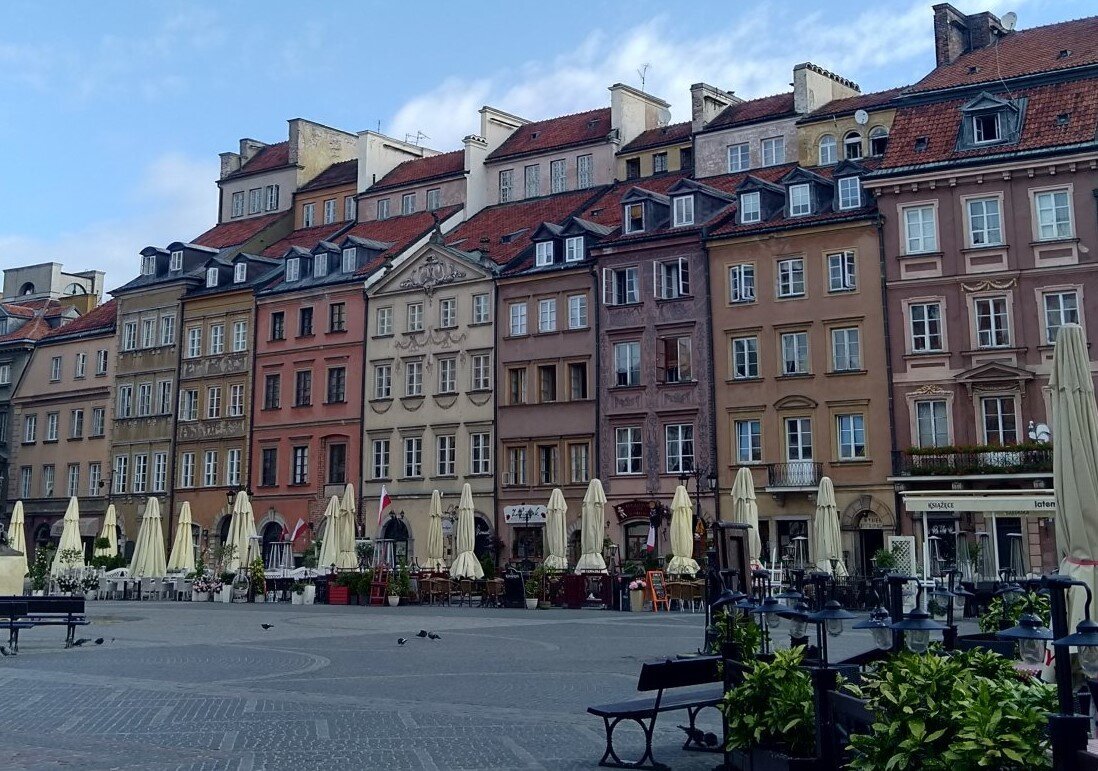
What to see in the Old Town:
- Castle Square (Plac Zamkowy) — this is where the Krakow suburb ends and the Old Town begins. In the center of the square there is a column from 1644 with a sculpture of Sigismund III. He made Warsaw the capital (Kraków was the capital until then).
- Świętojańska Street (Świętojańska) is a small alley with the Cathedral and a monument to a mermaid. The church was built in the 15th century and destroyed during the war.
- The Wishing Bell (Dzwon na Kanonii) is a bell that has never been hung in the belfry due to its faulty construction. It is said that if you make a wish and walk around it three times, the wish will come true. In the corner opposite the bell stands the narrowest building in Warsaw. It is so narrow that it is rarely noticed.
- Barbakan is a remnant of the XVI century outpost. Part of it is historical, part of it is new. Polish restorers rebuilt it from stone, which had blackened over time, making the wall appear ancient.
Walking around the Old Town is interesting even without a guidebook. On Piekarska and Beer Streets there are houses with colorful facades and sculptures with an interesting history.
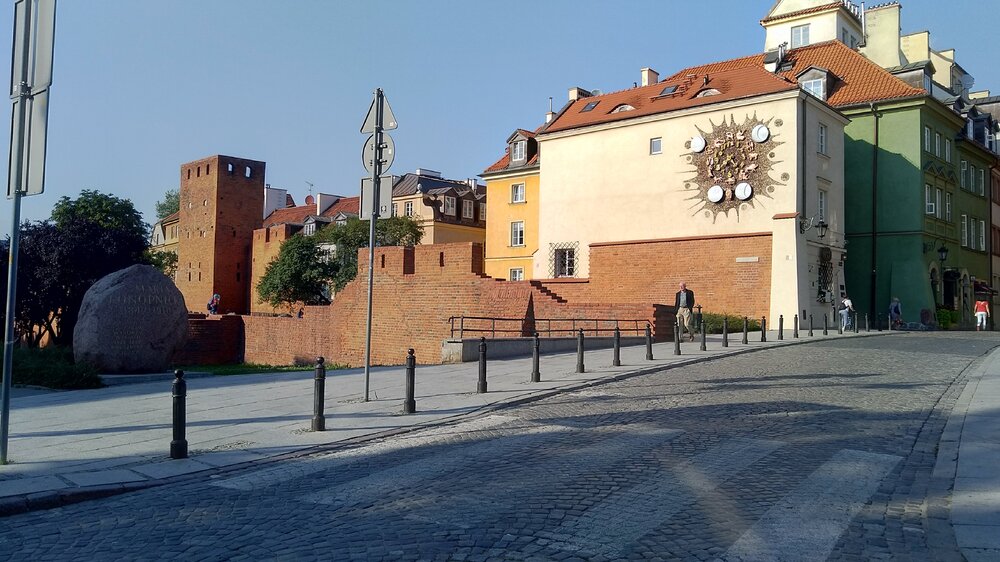
Royal Castle (Zamek Królewski w Warszawie)
The majestic palace complex is part of the Old Town. It includes the royal castle, the palace «Under the Plaque» and the park. It’s hard to believe it was destroyed during the war and rebuilt from scratch. Every day at 11:15 am at the clock tower, a trumpeter plays the Resistance military march. It was at this time that the clock stopped because of the bombing.
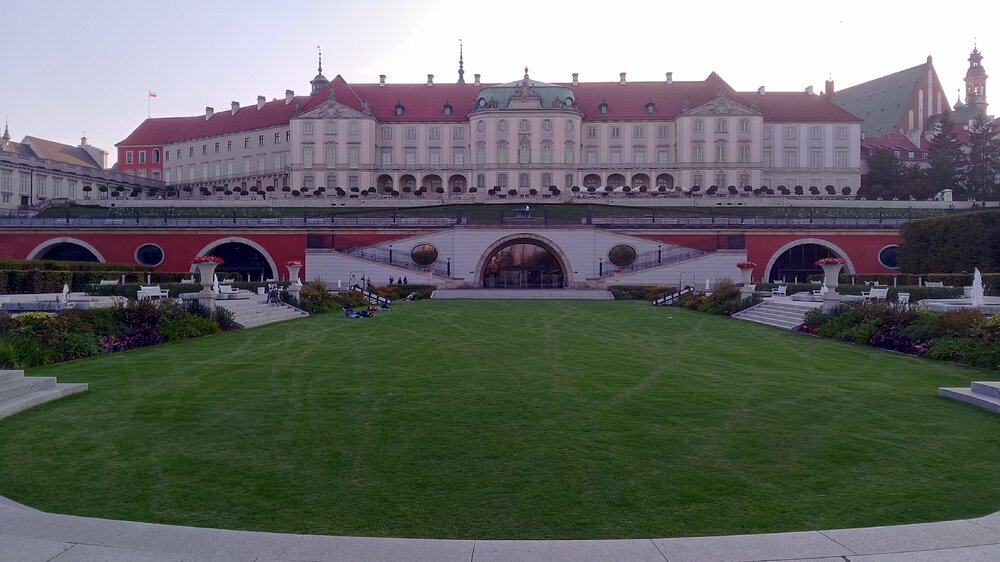
The history of the complex began in the XIV century. Before its destruction, the palace was the residence of the country’s rulers, and since 1988 it has become a museum. The numerous rooms have preserved the royal library, paintings, numismatic cabinet, sarcophagus with the heart of Tadeusz Kosciuszko. The Polish general was a hero of the USA, Lithuania, Belarus, personally knew J. Washington, B. Franklin and Napoleon, participated in the American War of Independence and received the most important military award of the USA. He fought for the independence of Poland, and despite the defeat, he became a national hero.
You can get into the palace for free if you choose the right day to visit.
- Palace website.
- Tuesday-Thursday and Saturday 10:00 a.m.-6:00 p.m., Friday until 8:00 p.m., Monday off.
- Free admission on Wednesdays, on other days — ticket 30 zł, audio guide 18 zł.
University Library (Biblioteka Uniwersytecka w Warszawie)
Warsaw is a very green city. There are many parks, fences are covered with climbing plants, balconies are planted with flowers. The main concentration of greenery in the city is on the roof of the Warsaw Library and its walls. Right on the roof there is a garden with paths, bridges and labyrinths, an observation room overlooking the Vistula, a pond with fish and a fountain.
The garden is made up of four parts:
- Golden Garden (north) — plants in the orange and yellow range.
- Silver Garden (East) — white and silver colored plants.
- Purple garden (south) — compositions of plants of purple shade.
- Green Garden (west) — ivy and other green plants predominate.
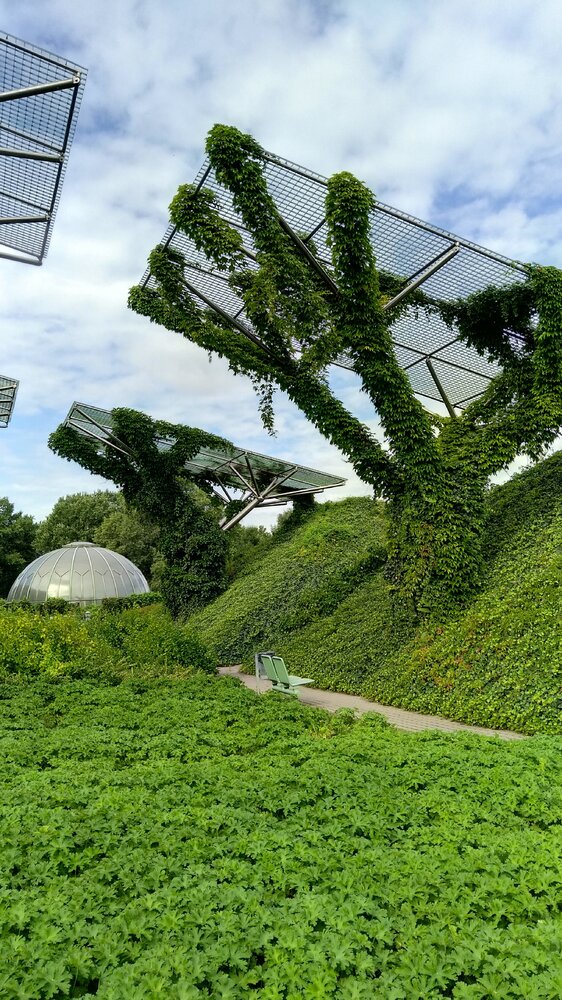
The library garden has become popular with tourists. If 2 years ago it was quiet on the roof, now weddings and picnics are filmed up there (this is officially allowed). There is a café in the lobby where you can buy coffee and food to take with you.
- Library website with a section about the garden.
- Mode of operation: May-September from 8:00 to 20:00, April and October from 8:00 to 18:00, November-March from 8:00 to 15:00.
- Admission: free of charge.
Copernicus Science Center (Centrum Nauki Kopernik)
100 meters away from the library there is a modern interactive science museum. The exhibits are made primarily for children, but adults also linger in front of them for a long time. This museum is a science center where you can touch, push and experiment with exhibits. It proves that science can be interesting.
The museum has two floors of interactive exhibits and a planetarium. Zones with instruments and installations demonstrate how physics and chemistry work. You can conduct experiments on your own and discover how and what works.
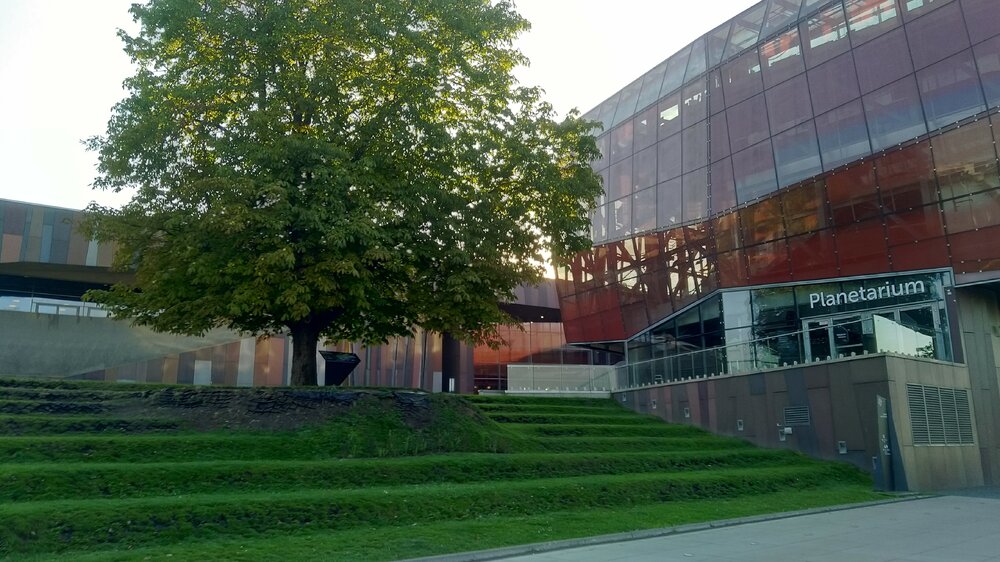
You can spend all day in the museum. Four hours was barely enough for me. You can take food with you or buy it in the canteen, the prices are affordable.
I recommend buying a ticket online — during the season there are always queues at the box office and there may not be enough tickets. On the website you can check if there are free tickets at the box office (more often than not there are not).
- Museum website with events.
- Mode of operation: Tuesday — Friday 9:00—18:00, weekends 9:00—19:00, not open on Monday.
- Entrance to the Science Center 31 zł on weekdays, 33 zł on weekends and holidays. Ticket to the Planetarium for 2D session 22 zł, for 3D — 27 zł.
Royal Łazienki Park (Park Łazienkowski)
Warsaw is cozy everywhere, and doubly cozy in the parks. My favorite is Lazienki. It is large, beautiful and well-maintained. It is especially nice here in the heat of the day, when the city is red-hot. You can sit on a chaise lounge near the lake, look at peacocks, listen to Chopin, and feed squirrels with nuts.
The park appeared in the XVII century. It got its name because of the bathing pavilion: the lazenki are the baths. The most photogenic place, the Palace on the Water, is a former summer residence, now an art gallery and royal halls.
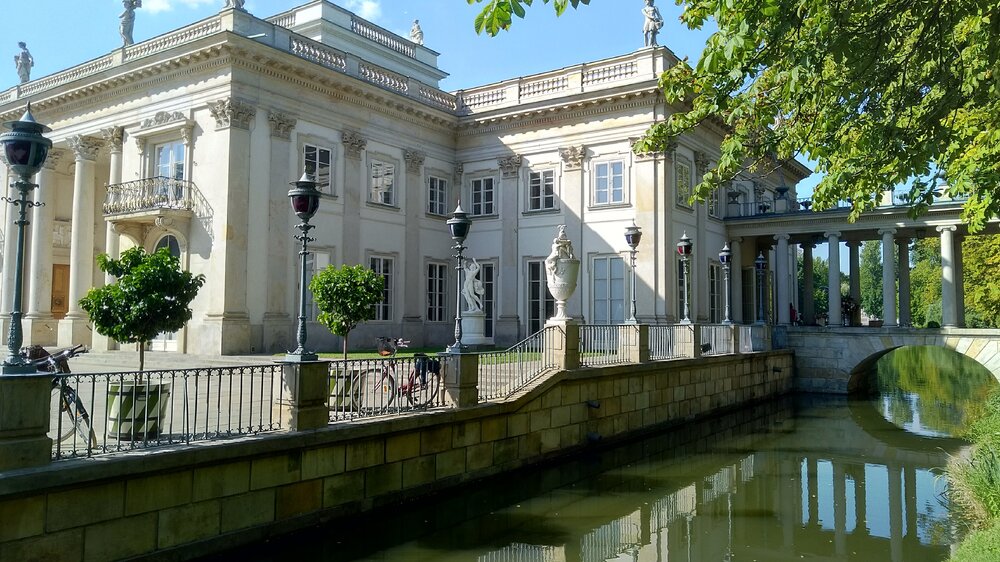
There are many ancient buildings in the park. Next to the palace is a Roman theater with tribunes decorated with statues. Not far away are the Chinese garden and the Belvedere. Everything is so authentic and harmonious that walking around it is easy to imagine yourself as part of the aristocracy.
- Website with events.
- Open Tuesday-Saturday from 10:00 to 18:00, Monday from 10:00 to 20:00. The Palace on the Island is open on Friday from 10:00 to 18:00, on other days until 16:00.
- Entrance to the park is free of charge. Ticket to the palace 25 zł, children and students up to 26 years old 1 zł, audio guide — 5 zł. Boat rental 7 zł.
Multimedialny Park Fontann (Multimedialny Park Fontann)
In the evenings there is a fountain show in the park. This impressive and exciting show tells for 20 minutes where Warsaw and its name came from. The first show starts at 21:30 and the last one at 22:10. During the show, the fountains dance, music plays and the lighting changes.
Warsaw is proud of its water supply system, and the fountain show is an opportunity to demonstrate this to tourists. The water in the capital is so clean that you can drink it from the tap. The park was opened in 2011 to coincide with the 125th anniversary of the city’s water supply system.
- Website
- Open May 1-September 30 on Saturdays and Sundays from 21:30 to 22:30
- Admission is free
The emotions of exploring Warsaw will stay for a long time, especially if you complement them with traditional cuisine and non-basic souvenirs for your loved ones. And if you stop by one of Warsaw’s trendy establishments, you will most likely want to stay in the capital of Poland for a while.


